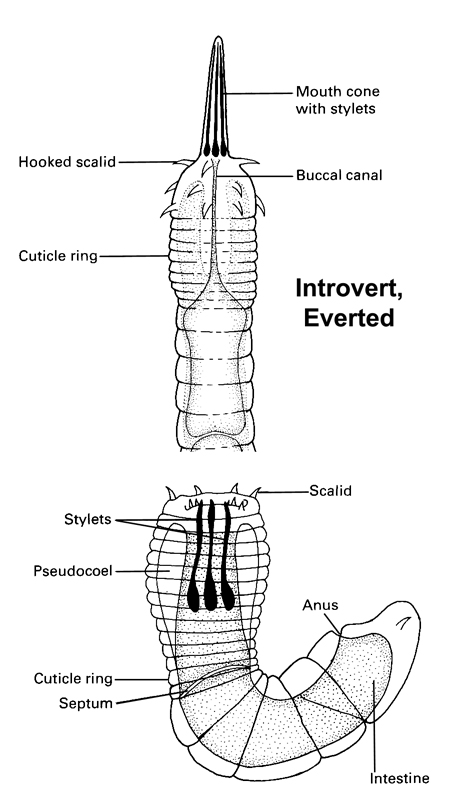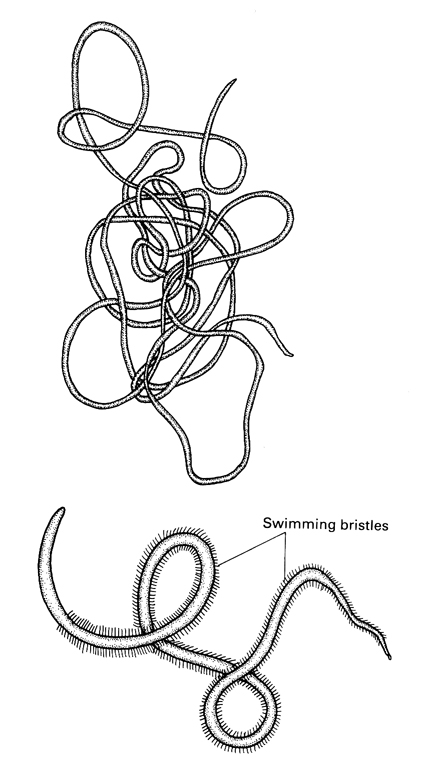Relatives of Nematodes
Phylum Nematomorpha (horsehair worms)
Adults can be extremely long and thin, hence common name “horsehair worms”, about 1-3 mm in diameter and can be 10 -30 cms in length.
Larvae are parasites in arthropods, and may have a second stage in a vertebrate host. Larvae absorb nutrients from host fluids mainly through the thin, permeable cuticle. Scalids and stylets allow larvae to penetrate host.

Adults are free-living but non-feeding. A mouth and anus are absent, but a vestigial midgut is usually present. Individuals molt as grow. They possess only longitudinal muscles.

• Marine pelagic form has swimming fringe
Compare to Nematoda
• Larva resembles adults in groups which we will discuss shortly, but adult is more nematode like in form.
• Adult cuticle is collagenous, but larval is chitinous
- Longitudinal muscles present. Circular muscles usually absent
- Only one or two ventral nerve cords and although considered a cycloneuralian, brain is very reduced.
- Digestive systems is non functional and body cavity is a hemocoels. Juveniles absorb host digestive products and adults do not feed.
Males are smaller than females, and the two sexes may be found in equal and unequal numbers in the same population.
The mode of development of nematomorphs after hatching has been the subject of much debate. Some experts suggest that the larvae encyst on vegetation or other substrates along the water's edge soon after hatching. Eventually, some of these cysts are ingested by hosts feeding on these substrates. The cyst rapidly degenerates in the digestive tract of the new host. The larva then burrows its way through the intestinal wall into the host's body cavity, continuing its development. When ingested by inappropriate hosts, the cyst may degenerate and then re encyst in the tissues of the host. If this inappropriate host is then ingested by one of its predators (an appropriate host for the nematomorph). The cyst may again disintegrate and continue its life cycle in this new host. Other researchers have suggested that after the nematomorph larva emerges from the egg, it will penetrate the body wall of just about any animal it happens to encounter, although again, normal development will occur only in hosts. This mode of development may occur in the semiterrestrial species of horsehair worms .


